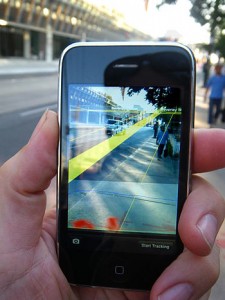Apple HealthKit: Health Information Exchange for Apps
Last year, one of my colleagues proposed an add-on for a popular fitness app as a course project. There has been a whopping increase in the number of health and fitness apps, monitoring a variety of parameters from blood sugar to the number of strides you take. As my colleague pointed out, all the necessary features are never there in any single application. How do you write an add-on for an existing app? Apps do not talk to each other much like their big brothers: health information systems.
 |
| (Photo credit: Wikipedia) |
Apple is trying to solve just that, with its new HealthKit framework. HealthKit allows apps that provide health and fitness services to share their data with the new Health app in the cloud and with each other. A user’s health information is stored in a centralized and secure location and the user decides which data should be shared with your app. I have a couple of friends currently working on population pharmacokinetics. HealthKit may be an ideal framework for sharing pharmacokinetic data too.
Though HealthKit is lingering over a last minute bug that slows down apps that use this framework, it may be a novel and effective tool for app designers. However whether the technology will bring the prophesied ‘Healthcare revolution’ remains to be seen. The new generation apps are going to make life difficult for physicians, already inundated with lots of data. Hope the proverbial ‘Apple a day’ does not happen!
Be on the watch out for the Apple watch as well. I feel Apple watch is more likely to be a disruptive innovation than HealthKit itself. Watch is always more intimate and ubiquitous than any other wearable device. The built-in accelerometer, heart-rate sensor and GPS along with Apple’s ingenuity provides enough reason to expect amazing functionality.
Addendum:
Epic spokesman Brian Spranger offered still more detail, describing to VentureBeat’s Mark Sullivan how a device such as the WiThings Wi-Fi-enabled scale could “notify HealthKit that it has a new weight and ask HealthKit to store that weight in the database on the iPhone.” From there, “If the patient has given permission for the MyChart app on their phone to know about that data, HealthKit ‘wakes up’ the MyChart app and tells it there’s new data,” according to Spranger. “The MyChart app on the phone then transmits that weight back to the EpicCare EHR system where it can be used appropriately as part of the patient’s medical care.”